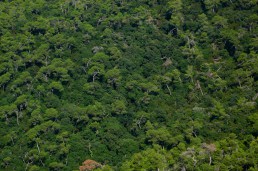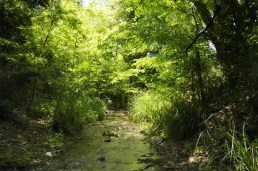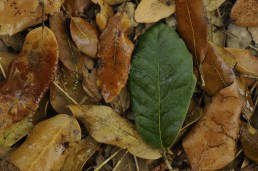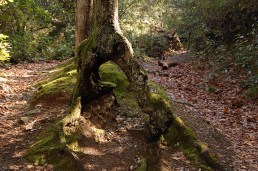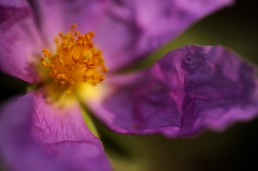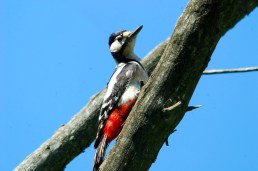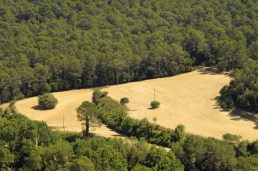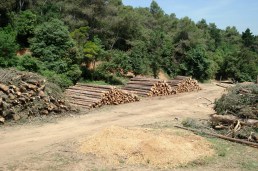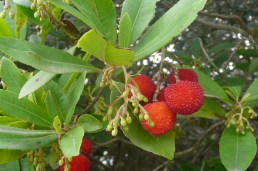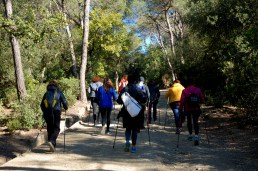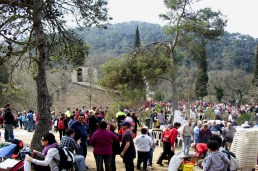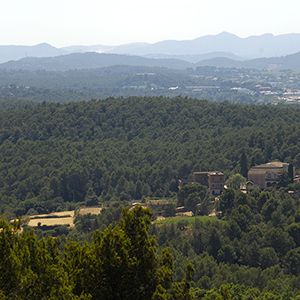Natural spaces play a key role in protecting soil and in regulating water resources and even the climate. The environmental benefits of the vast natural space of Collserola has a direct impact on the health of the millions of people that live around it.
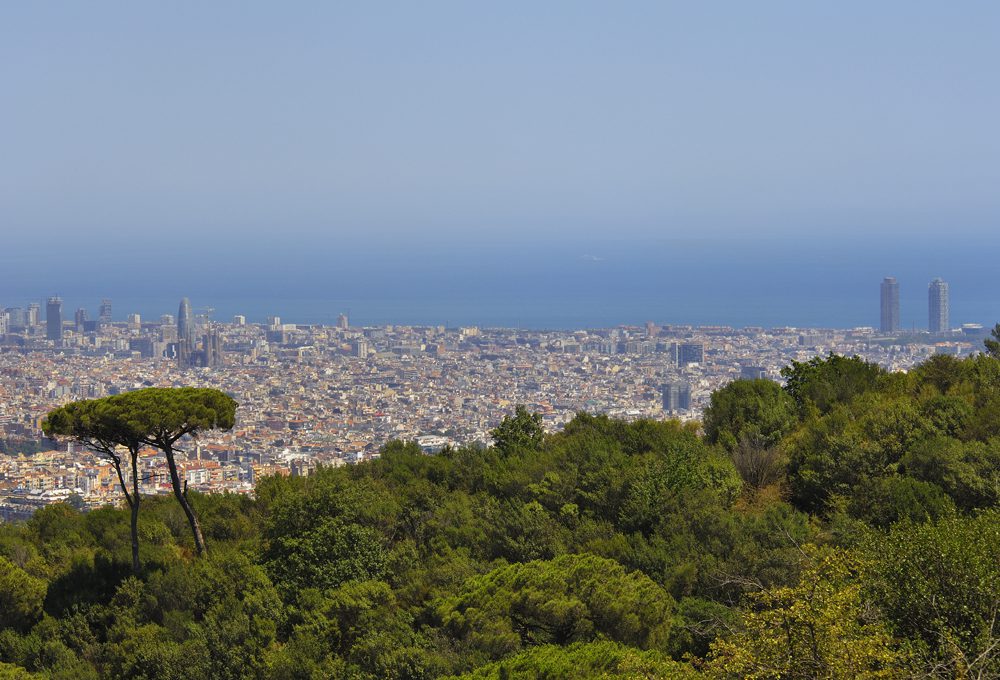
In addition, the woodland (woods and forests, thickets, meadows and plantations of trees for crops) are an important source of wealth for a country’s economy. As well as the timber and everything else that derives from it, there are mushrooms, medicinal plants, fruit, hunting, pasture, etc. All of these are renewable resources.
Lastly, natural spaces are important places for leisure and an essential educational setting for a society in which the urban population continues to grow. The park is a place where people meet up, a place where traditions, legends and popular customs are rooted. It is also a place of great visual beauty that provides an opportunity for positive contact with nature, artistic development and discovery.
Consequently, it is possible to speak of the three major functions of natural spaces: environmental, productive and social.
Woods and forests close to cities emit oxygen (O2) and they fix carbon dioxide (CO2), they filter dust particles and they reduce noise levels. In addition, they regulate and purify water, and the currents of cooler air within them help to dissipate the heat and pollution produced by industrial companies, heating and vehicles.
The main environmental functions of forests are:
Regulation of the water cycle:
Plants retain rainwater and release it gradually, thereby slowing the risk of flooding. Consequently, forests regulate water resources and, by extension, the climate.
Woods store and purify water. When water transpired by woodland meets a mass of cold air, it condenses and forms mist and clouds. These mists can give rise to large volumes of rainfall. It has been proven that it rains more in wooded areas than in deforested zones.
Vegetation absorbs the nutrients made available by organic residues in water, which are not toxic to plants. In this way, the vegetation helps to reduce water pollution and to improve its quality.
In Mediterranean forest ecosystems, 90% of rainfall can return to the atmosphere through evapotranspiration, in other words, the sum of the evaporation of the water that has wetted the surface of plants and the ground plus the water which, once in the soil, is absorbed and transpired by plants. A tree, for example, can transpire 5.7 litres of water per hour.
Erosion reduction
Vegetation plays an essential role in retaining rainwater and in protecting the soil. Plant roots protect the soil from water erosion and prevent landslides, while at the same time stopping floods or minimising their harmful impact.
Soil with no plant cover runs the risk of being eroded by fast-flowing runoff water. This is especially the case in Mediterranean regions, where rainfall can be torrential and wash away large quantities of soil.
Air quality
Forests are major regenerators of the oxygen we breathe and at the same time they fix atmospheric carbon dioxide. They also filter particles in suspension and retain dust, something that is extremely important in urban areas surrounded by woodland and parks, where there is a large amount of dust. The resulting air is clean and pure.
When plants feed, they transform CO2 and H2O; the products of the chemical reaction are organic compounds (CH2O) and oxygen (O2), which returns to the atmosphere.
Plants store CO2, thereby contributing to minimising climate change by acting as a ‘reservoir’ for this greenhouse gas. A wood absorbs 3 to 15 tonnes of CO2/hectare and releases 5 tonnes of O2 a year, the amount needed by ten people to breathe for one year.

Presence of plant and animal species
Natural spaces are a source of biodiversity and are home to certain varieties of plants that have been traditionally used by humankind. These spaces are also a refuge for crop pollinators and for creatures that predate on agricultural pests and spread seeds.
This biodiversity is not limited just to the catalogued species, as it also encompasses the various populations of a single species that live in the mountains, as well as the different individuals in the same animal or plant community. These three sources of variation are fundamental for species to be able to survive and successfully evolve in response to possible changes.
The biological species on Collserola do not just constitute a scientific and cultural asset: the preservation of their diversity is a prerequisite to guarantee the future of natural systems.
Sound screen
Local noise is determined by sound absorption by the atmosphere and the refraction and dispersal of sound energy, which act in combination from the emitter to the receiver. Even though the amount of sound energy absorbed in this way by a single leaf is very small, this mechanism can contribute greatly to the acoustic attenuation achieved by plants and plant communities, as the number of leaves on an adult tree may be around 2 × 105. Consequently, a wood may have a noise reducing effect of up to 20 or 30 decibels and so functions as an acoustic screen by deadening sound.
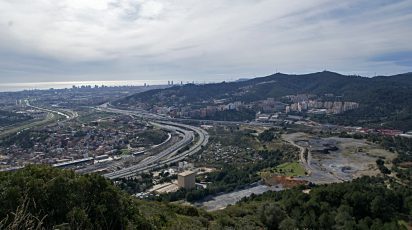
Urban microclimate regulation
Green spaces in cities or nearby parks not only provide shady spaces but also help to attenuate extreme high and low temperatures, as plant material is very inefficient at storing calorific energy and immediately exchanges heat with the environment and refreshes its environs. In addition, thanks to the process of evapotranspiration, plants increase environmental humidity. All in all, plants in cities help to reduce energy expenditure in urban spaces.
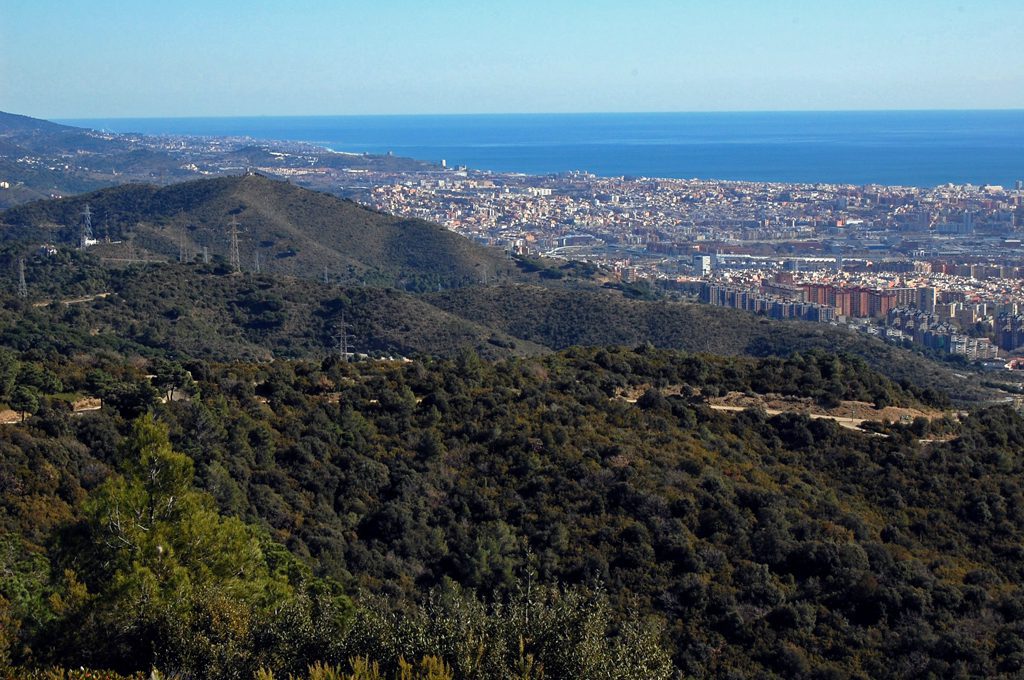
Nature is a vital resource in the world economy. Natural habitats and cropland are part of our landscape and our lives, and the resources that we can take from them are renewable (though not inexhaustible) if they are not abused.
Traditionally, natural spaces have been treated as a place where wood is exploited, but in areas with low wood production or which have some other product that is far more highly prized, such as truffles or pine kernels, these resources can become as important as wood or even more so. Thus, natural spaces provide us with a large number of resources: land for agriculture and pasture, drinking water, wood, medicinal, aromatic and ornamental plants, foodstuffs such as mushrooms and fruits of the forest, etc. Technical criteria and production methods aimed at making maximum use of resources while remaining compatible with natural systems need to be established
Natural spaces are an essential part of humankind’s heritage. They have provided the opportunity for positive experiences for generation after generation. In recent decades, the rise in people’s income and leisure time, and the improvements to transport networks that make it easier to get about, have played a part in raising the importance of the range of recreational and cultural services in developed societies.
The most important aspects of Collserola Park’s social function are:
Landscape value and place of discovery
Collserola is a large leisure area of recognised value as a beauty spot and it is also an essential educational environment for a society in which the urban population continues to grow every day.
Natural spaces have provided inspiration and have whetted people’s curiosity throughout history. Without question, they affect visitors’ frame of mind and spirit. They inspire artists and spark their creative processes, as demonstrated by the many artworks associated with the chain of mountains.
They also provide an opportunity for positive experiences, enabling people to feel close to nature. They are a place of discovery and learning par excellence, as demonstrated by the naturalists and associations of experts and amateurs alike that have emerged here.
Cultural values
For centuries, human communities have forged close bonds with nature, and these ties have been expressed in very different ways depending on the moment in history and on local customs.
The natural environment is a place steeped in traditions, legends and popular customs:
- Gatherings and pilgrimages that have continued throughout the centuries: Sant Medir, Sant Iscle, La Salut and El Rocío.
- Legends, such as that of Sant Medir or the Giant of the Pine.
- Outings to springs: Outings to springs became a popular activity in these mountains at the start of the 20th century. Factory workers, for example, would look for a healthy spot where they could get away to counter the harmful effects of their industrial work. Some 250 references to springs on Collserola have been found.
- Ramblers’ associations with a long tradition of popular walks.
In addition, natural spaces are the ideal place for meditation and contemplation, for enjoying peace and solitude while listening to the sounds of nature or simply seeking silence.

